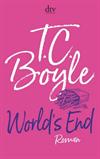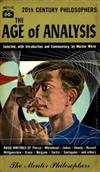
The Long March: The True History of Communist China's Founding Myth
by Sun Shuyun | History | This book has not been rated.
ISBN: 0385520247 Global Overview for this book
ISBN: 0385520247 Global Overview for this book
Registered by varykino of Greenfield Park, Québec Canada on 8/24/2014
 This Book is Currently in the Wild!
This Book is Currently in the Wild!
 This Book is Currently in the Wild!
This Book is Currently in the Wild!
1 journaler for this copy...
History is written by the victors.”
― Winston Churchill
The Long March (October 1934-October 1935) was a military retreat undertaken by the Red Army of the Communist Party of China, the forerunner of the People's Liberation Army, to evade the pursuit of the Kuomintang (KMT or Chinese Nationalist Party) army. There was not one Long March, but a series of marches, as various Communist armies in the south escaped to the north and west. The most well known is the march from Jiangxi province which began in October 1934. The First Front Army of the Chinese Soviet Republic, led by an inexperienced military commission, was on the brink of annihilation by Generalissimo Chiang Kai-shek's troops in their stronghold in Jiangxi province. The Communists, under the eventual command of Mao Zedong and Zhou Enlai, escaped in a circling retreat to the west and north, which reportedly traversed over 9,000 kilometers (6,000 miles) over 370 days. The route passed through some of the most difficult terrain of western China by traveling west, then north, to Shaanxi.
The Long March began Mao Zedong's ascent to power, whose leadership during the retreat gained him the support of the members of the party. The bitter struggles of the Long March, which was completed by only about one-tenth of the force that left Jiangxi, would come to represent a significant episode in the history of the Communist Party of China, and would seal the personal prestige of Mao and his supporters as the new leaders of the party in the following decades. However the true role of Mao in the Long March remains disputed, with many claims that Mao's role was heavily exaggerated and certain events in the Long March entirely fabricated.
The truth behind the myth is a lot more complex - and much more interesting. Sun Shuyun has done an impressive job of on-the-ground reporting, interweaving the memories of survivors to build up the narrative as the communists leave their base in Jiangxi province
Traveling by car, bus, train and on foot, she found survivors whose stories cracked open the myth still assiduously nourished by museums and curators. Bright-eyed idealists did not flow in torrents toward the Red Army, whose vicious recruiting practices were more reminiscent of the press gangs once employed by the British Royal Navy. The slightest hint of disloyalty meant death in a fighting force racked by brutal purges. Shuyun begins each chapter with an account of a particular moment during the March, told from the point-of-view of a participant she interviewed, then paints the background, supplies the details and records her impressions on visiting the sites today. Much is disturbing. The Red Army stole vast stores of food and supplies from local people; in one instance, it brutally attacked a monastery. Soldiers suffered from starvation, disease, frostbite and wounds; as they crossed rivers, the waters ran red with their blood. The author emerges from her odyssey with a deepened admiration for the Marchers, who managed to survive not just their enemies but also their leaders
― Winston Churchill
The Long March (October 1934-October 1935) was a military retreat undertaken by the Red Army of the Communist Party of China, the forerunner of the People's Liberation Army, to evade the pursuit of the Kuomintang (KMT or Chinese Nationalist Party) army. There was not one Long March, but a series of marches, as various Communist armies in the south escaped to the north and west. The most well known is the march from Jiangxi province which began in October 1934. The First Front Army of the Chinese Soviet Republic, led by an inexperienced military commission, was on the brink of annihilation by Generalissimo Chiang Kai-shek's troops in their stronghold in Jiangxi province. The Communists, under the eventual command of Mao Zedong and Zhou Enlai, escaped in a circling retreat to the west and north, which reportedly traversed over 9,000 kilometers (6,000 miles) over 370 days. The route passed through some of the most difficult terrain of western China by traveling west, then north, to Shaanxi.
The Long March began Mao Zedong's ascent to power, whose leadership during the retreat gained him the support of the members of the party. The bitter struggles of the Long March, which was completed by only about one-tenth of the force that left Jiangxi, would come to represent a significant episode in the history of the Communist Party of China, and would seal the personal prestige of Mao and his supporters as the new leaders of the party in the following decades. However the true role of Mao in the Long March remains disputed, with many claims that Mao's role was heavily exaggerated and certain events in the Long March entirely fabricated.
The truth behind the myth is a lot more complex - and much more interesting. Sun Shuyun has done an impressive job of on-the-ground reporting, interweaving the memories of survivors to build up the narrative as the communists leave their base in Jiangxi province
Traveling by car, bus, train and on foot, she found survivors whose stories cracked open the myth still assiduously nourished by museums and curators. Bright-eyed idealists did not flow in torrents toward the Red Army, whose vicious recruiting practices were more reminiscent of the press gangs once employed by the British Royal Navy. The slightest hint of disloyalty meant death in a fighting force racked by brutal purges. Shuyun begins each chapter with an account of a particular moment during the March, told from the point-of-view of a participant she interviewed, then paints the background, supplies the details and records her impressions on visiting the sites today. Much is disturbing. The Red Army stole vast stores of food and supplies from local people; in one instance, it brutally attacked a monastery. Soldiers suffered from starvation, disease, frostbite and wounds; as they crossed rivers, the waters ran red with their blood. The author emerges from her odyssey with a deepened admiration for the Marchers, who managed to survive not just their enemies but also their leaders
Journal Entry 2 by varykino at Dominion Square in Montréal, Québec Canada on Monday, September 8, 2014
on a bench
Change of plans.
left in front of Pierre Trudeau's former home. Another politician who went on a long walk in the snow to re think his political future
Change of plans.
left in front of Pierre Trudeau's former home. Another politician who went on a long walk in the snow to re think his political future
















